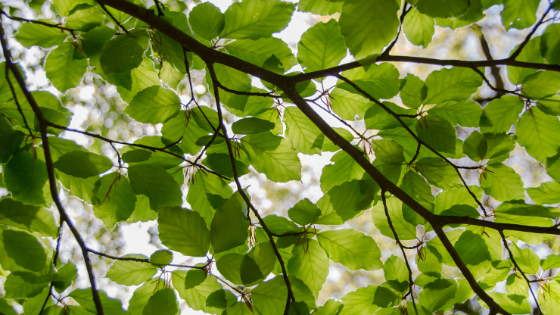
The Best Times to Plant Trees in Cold and Warm Climates

To plant or not to plant?
When it comes to gardening and landscaping, timing plays a huge role in the success of your grounds. Yes, maintenance matters, but first—make sure you are selecting the right varieties for your region and planting at the most opportune times. That will ensure the success and growth of your yard or property.
Here are two big questions to consider when planting —
What is the regional climate like? And what type of plant am I cultivating?
Climate is Key
There is one general rule of thumb when it comes to planting: avoid the extremes. Hot summers and cold winters are harsh climates for plants to weather, especially newly-cultivated ones.
If you plan your landscape maintenance during the peak of hot temperatures, it’s likely that your plants will look dead the next day. With luck, you make be able to revive them, but it takes a lot of work and monitoring.
If you landscape during the cool or freezing wintertime, cold ground and even colder water can stunt or completely stop plants from rooting into the soil and growing.
The general consensus is to plant during the more mild seasons, especially spring when both plants and people actually enjoy gardening. It’s for good reason—springtime in most areas of the world means the soil is nourishing and easy to root into and that sunshine is on it’s way. Once the plant is rooted into the soil and growing foliage, it has the best chance of getting everything it needs to make nutrients
There is one notable downside to planting in the spring. It takes a lot of energy for the plant to grow so much! When a tree, for example, is rooting into the ground during the spring, it is also growing upward. This means that when you plant in the spring, expect to give your landscape a lot of water and adequate fertilizers or plant food.
Your second-best option is likely late winter, when the ground is warming and nutrients will soon be readily available. As a rule of thumb, if the ground is too hard for you to easily dig into, it’s not ready for a plant to root into either.
Consider the Type of Plant
The other major factor when it comes to setting your grounds up for success is the the type of plants you work with. Even if you do manage to hit the season right, if you’re seeding a plant that’s completely ill-equipped to survive in your zone/climate, you’ll be incredibly disappointed.
A professional landscaping management company will save you a huge amount of stress and work when it comes to selecting plants that are likely to succeed.
The best time to plant a tree is when it is dormant. During dormancy, the plant is using the least amount of its efforts to grow and is most likely to weather the rather intense planting experience well.
For the most part, trees in the Northern Hemisphere are dormant from some time in the autumn through the early spring. When trees go dormant and lose their leaves, their energy expenditure is reduced and they need less water. This is even true for evergreen trees that don’t lose leaves. During dormancy, trees essentially go into a tiny hibernation, which makes planting or re-planting them ideal.
In addition to dormancy, consider the state of the tree you’re planting—a bare root system or cone-bearing tree is more sensitive and will need to be planted at the most optimal time. Especially avoid too cold or hot seasons for those types. A container tree or a younger tree (which is less developed) will be the most resilient. The older or less protected the tree is, the more susceptible to harmful climates.
The best time to plant?
When landscaping on any scale, consider these two factors most of all: what you are planting and when. Choosing a sturdy, young tree that’s been housed in a container will give you the most leeway. Timing your planting is still key, so shoot for the late winter or early spring, when most plants are leaving their winter dormancy and getting ready to grow. With these two vitals (and expert guidance is highly recommended), you should be set up for a successful, growing garden.
